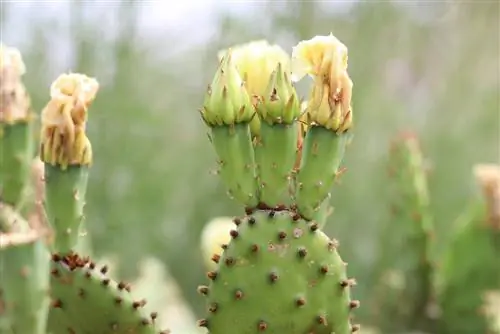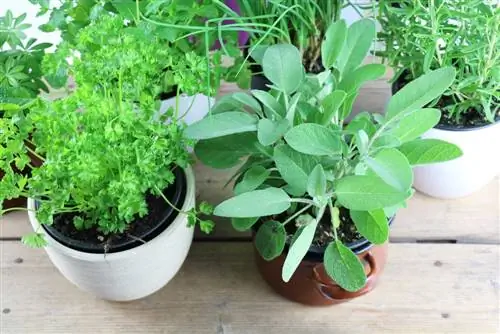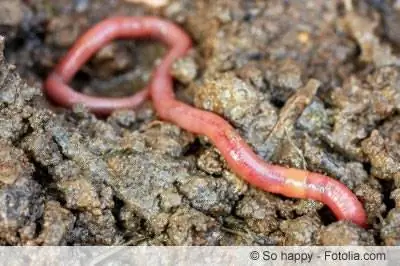- Author admin [email protected].
- Public 2023-12-17 03:39.
- Last modified 2025-06-01 06:48.
Cactus fertilizer is formulated differently than normal green plant fertilizer because cacti are not normal green plants, but water-storing succulents with special nutrient needs. Read how a good cactus fertilizer is made up and how you can make cactus fertilizer yourself or supplement it with home remedies:
What fertilizer do cacti need?
Decidedly not the fertilizer that most (normal) land plants need, because cacti are not normal land plants. Rather, they are slow-growing specialists who thrive in areas with frequent water shortages and have created special plant cells to store occasional excess water for times of low water. They are the best-known representatives of these succulent (“juicy”, from Latin sucus) plants that are adapted to special climate and soil conditions; mostly stem succulents whose shoot axes swell significantly when well cared for.
The cactus family represents an impressive 108 genera of perennial plants, all of which originally developed on the American continent. There they have spread from southern Canada to southern South America, in lowlands and high mountains, tropical rainforests, steppes and deserts. All of these habitats have one characteristic in common: the water necessary for survival is not available all year round, but only occasionally.
Tip:
Cactus fans may be confused by the statement that all cacti are native to America. That's almost true: one of the currently 2,233 recognized cactus species in a good 100 genera made it to Africa and from there even to the southernmost tip of Asia (Sri Lanka). This Rhipsalis baccifera, in German coral cactus or rush cactus, is the most widespread type of cactus in culture. It has no influence on the nutrient requirements, not even on the light requirements, because Rhipsalis baccifera also originated in America.
Of course, these developmental conditions also influenced how the cacti's nutrient requirements developed. Nutrients are absorbed dissolved in water via the roots, so in cacti the water supply is rather rare and sparse. However, the nutrients are then released from the soil from a wider area because fine hairy roots grow during the rainy season. The cacti have adapted to this rare supply of nutrients during their development; only culture under similar conditions allows them to grow he althily and bloom magnificently abroad.
The vital plant nutrients that must be supplied primarily through fertilization are nitrogen, phosphorus and potassium. That's why these nutrients are also in most fertilizers, the "NPK" in the name NPK fertilizer (the complete fertilizer) stands for N like nitrogen=nitrogen, P like phosphorus and K like potassium. Land plants also need certain minerals that can be found in the soil: The main nutrient elements that must be supplied in noticeable amounts are calcium, magnesium and sulfur (as in humans, calcium, iron, fluoride, iodine, potassium, magnesium, sodium, zinc). Plants need vital, tiny amounts of the micronutrient elements boron, chlorine, iron, cob alt, copper, manganese, molybdenum, nickel and zinc (this corresponds to the essential trace elements chromium, copper, lithium, manganese, molybdenum and selenium in humans).
It's no different with cacti because soil all over the world contains the same nutrients and nitrogen, phosphorus, potassium are the nutrients that are most likely to run out. Unlike other plants, cacti are used to spending a good part of their existence in a nutrient-deficient situation.
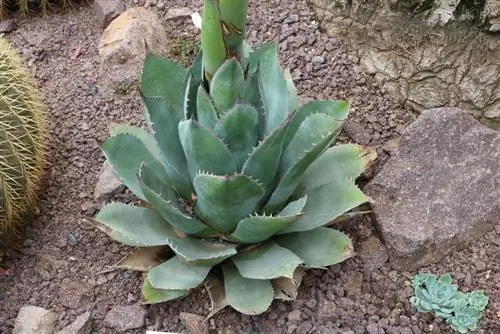
This is what the composition of a cactus fertilizer is designed for. Normal green plant fertilizers contain around 3 parts nitrogen, 1 part phosphorus and 1.5 parts potassium, all in a certain percentage based on the filling mass. NPK 12/4/6 means 12% or 3 parts nitrogen, 4% or 1 part phosphorus, 6% or 1.5 parts potassium. The nutrient content of a green plant fertilizer consists of approximately half nitrogen, the second half is shared by phosphorus (a good 1/3) and potassium (almost 2/3); the minerals are added as a trace element mix. Things look a little different with the cacti:
Nitrogen
Nitrogen is the nutrient for powerful and rapid growth, which cacti don't need much of. If enough nutrients flow in with seasonal rain, a stem succulent cannot simply start growing vigorously, as the statics of the stem made of soft plant tissue would suffer. When the rain is over and nutrients become scarce, the cactus cannot supply any masses of new tissue. This is why cactus fertilizer contains less nitrogen; its proportion should at most be as high as the proportion of phosphorus and potassium.
Phosphorus
Cacti need phosphorus for reproduction, i.e. for flowering, fruit formation and fruit ripening. It is essential for the cactus, so enough of it must be stored and contained in the cactus fertilizer: at least as much as nitrogen and potassium, and preferably a little more than nitrogen. But not much more, because excess phosphorus forms chemical bonds with minerals; These important trace elements can then no longer be absorbed by the plants, which leads to growth disorders.
Potassium
Potassium is more important for cacti than for normal plants with thin green shoots or thick but woody branches because, among other things, potassium is responsible for the stability of a plant. In addition, potassium is extremely important for cacti because it regulates the water balance - and this should work really precisely in a plant that regulates the water balance through internal storage for a large part of its lifespan. Other “tasks of potassium” are strengthening resistance to animal and plant pests and developing good cold and frost resistance (although the latter is only interesting for a few selected species in cactus cultivation in our latitudes). Potassium should therefore be contained in relatively high amounts in cactus fertilizer, at least a third of the nutrient content, preferably more (especially at the expense of the nitrogen content).
Minerals and trace elements
Cacti also have special requirements when it comes to minerals and trace elements: the patchily vegetated soils in their home areas are certainly rich in minerals rather than poor in minerals; Many spines should ward off enemies and not hang limply on the plant; the cactus needs enough calcium for this.
Summary: Cactus fertilizer can be used from a nitrogen-phosphorus-potassium ratio of 1:1:1, should not contain more nitrogen than phosphorus and potassium (more phosphorus and potassium than nitrogen is possible), enrichment with minerals and trace elements desirable.
Composition and ingredients of some proven cactus fertilizers:
- WUXAL cactus fertilizersr: NPK 4-6-8 with trace nutrients (boron, copper, iron, manganese, molybdenum, zinc and sulfur, which has no longer been used since the invention of flue gas desulfurization large quantities “floating around” in the environment)
- Compo cactus fertilizer: NPK 5-5-7 with trace nutrients (boron, iron, manganese, molybdenum)
- Uhlig cactus fertilizer: NPK 1, 5-2, 3-3 and trace nutrients
- Cactus Haage cactus fertilizer: NPK 6-12-6 + valuable trace nutrients
Cacti Haage is the oldest cactus nursery in the world (gardening since 1685, specializing in cacti since 1822) and will therefore know for sure. Here you also get many interesting additives such as valerian flower extract (for more flowers, against fungi on the sowing) and special compositions such as leaf cell nutrient solution for epiphytes, 10-52-10 phosphorus fertilizer for root and bud formation and potash fertilizer for the last fertilizer application before the "Hibernation.”
Quite a difference?
The fertilizers from Cacti Haage provide the crucial clue; It is not the exact composition of a fertilizer that matters, but rather you have the choice: you decide on one of the commercially available fertilizers and switch to one with a slightly different composition whenever this fertilizer does not seem to optimally nourish your cacti or you do something more thorough with the matter and learn which deficiency symptoms indicate deficiencies in which nutrient.
As an introduction, here is a first overview
Nitrogen deficiency slows growth and causes leaves or cactus trunks to turn yellow to pale green; Lack of phosphorus causes cacti to have little or no flowering and fruiting; Potassium also causes stunted growth and wilting. You can see from this short description that things are not that simple; Nitrogen and potassium both cause delayed growth and improperly colored plant cells.
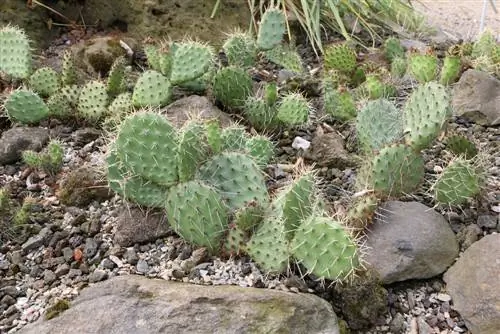
So in order to fertilize the plant according to appearance/needs, you would have to learn to recognize the differences - one could perhaps describe the effects of a nitrogen deficiency as weakness, while the effects of a potassium deficiency look more like the plant "from “is darkened and compressed by a giant hand”. However, these descriptions become much clearer once you have seen what it looks like in plants and, in the special case, cacti, and have found a gardener or experienced cactus friend who can give you “live lessons”. Each mineral also causes its more or less specific deficiency symptoms, and the success of fertilizing then of course depends crucially on how and how often the cacti are fertilized:
How should cacti be fertilized?
How and how often your cacti receive nutrient replenishment depends on various factors:
- Vegetation phase: Cacti are only fertilized during the growth phase from spring to early autumn
- Start of the growth phase: April, May; End of growth phase: August, September; Last fertilizer application: August
- Season: More fertilizer in June/July than April, May, August, September
- Concentration: Weakly concentrated fertilizer (0.05%=0.5 ml per 1 l of water) every 2-3 weeks, more concentrated (0.1%=1 ml per l of water) 1 x per month
- The weak, more frequently administered concentration is preferable because it ensures a more even distribution of nutrients
- Weather: If possible, do not fertilize when the room is heated, then the nutrients remain concentrated on the substrate surface
- Moisture of the substrate: Do not fertilize on dry plant substrate
- Then the nutrient solution runs through to the roots, ineffective and potentially damaging to the roots
- Dried out plant substrate should be thoroughly moistened days before fertilizing
- And it can (should) always drain so well that the roots don't get wet
- During winter rest in a bright, cool environment, water more sparingly and under no circumstances fertilize
- From around February/March, place it in a sunny, warmer location and slowly water more
- Initially just shower to stimulate growth, water more vigorously a week later
- Soon afterwards the plant is “really awake” and can tolerate the first fertilizer
Tip:
Freshly potted cacti only need fertilizer in the growing season after next because they are previously supplied with the nutrients in the commercial cactus soil. Previously, the fertilizer would even interfere with growth because the roots would not stretch if they immediately encountered enough nutrients. Unless you mix your cactus soil yourself, but then you will know which nutrients need to be added and when.
Pampering cacti?
For friendly people, the idea of providing the cacti that suffer from a shortage in the wild a generous supply in their own home is obvious. There is little to be said against this; The supply only quickly becomes too abundant. Too lush is not good for your he alth, not even with plants.
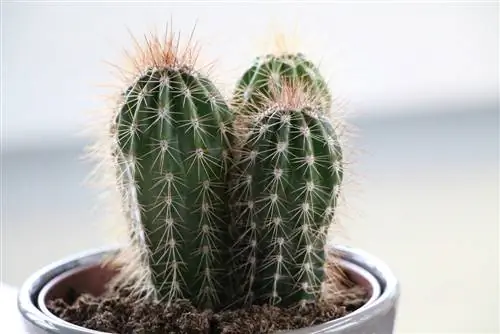
It's better to give fertilizer a little too little or too rarely rather than too much or too often, because cacti react more sensitively to excess than to deficiency. Fertilize carefully so that the quantity instructions stated on the package are always adhered to. In case of doubt, you can rely on this information rather than on the selected fertilizer composition: Concentrations that are too high become noticeable quite quickly and are therefore tested carefully, while a nutrient that is too low in dosage may only show effects after months.
Perhaps it has no effect at all, because the diversity of the nutrient supply can be enriched:
Make your own cactus fertilizer
DIY appeals to many people because meaningful activity is good for the mind and saves money and making useful things yourself increases the proportion of self-determined life. Why not do your own fertilizer instead of just going to the store? Basically a good idea; but it is important to choose the appropriate variant:
Mix cactus fertilizer from the basic elements
You could theoretically make all the cactus fertilizer yourself.put together your own from the main nutrients. Commercially available fertilizers consist of a few basic chemical substances such as ammonium nitrate, mono-ammonium phosphate, di-ammonium phosphate, ammonium sulfate, urea, potassium hydroxide, potassium nitrate, potassium sulfate, phosphoric acid as nitrogen, phosphorus and potassium suppliers, whose NPK concentrations are known. Anyone can buy these chemicals and mix them into a fertilizer at home if they paid attention to chemistry in school.
Financially, it's not even worth it for people who can buy from chemical wholesalers, because individual chemicals (normally used in laboratories etc. and cleaned accordingly) are expensive. The effort involved in putting together would be worth it if you could put together the perfect fertilizer for your cacti. Unfortunately, this is difficult or even impossible because not only does each species have its specific requirements, but also every slightly different location and countless other factors influence the “hunger of the plant”.
Just mixing it like that doesn't work either, e.g. B. because the mixture needs a certain pH value to prevent nutrients from settling. This pH value is z. B. only met if very specific combinations of the nitrogen, phosphorus and potassium suppliers just mentioned are mixed together. Aside from that, very few people have the appropriate space available because the individual chemicals cannot simply be mixed together on the kitchen table; and there are many more safety tips and precautions to follow
Change finished cacti as desired
You can still easily “change” the chemical composition of a fertilizer with home remedies if you are good at calculating percentages: Simply mix different fertilizers whose NPK content you know into a fertilizer that has exactly the NPK -Compilation contains what you would like to give your cacti. The pH value of these liquid fertilizers is already set correctly, and you could make a serious mistake when dumping them without damaging your plants.
Fertilize cacti with home remedies

There are numerous substances in the household that don't have to fill the trash, but can instead feed plants. You can find a list of everything from aquarium water (with potassium and nitrogen) to coffee grounds (which is actually a complete fertilizer) to cigarette ash (which contains at least 50% calcium oxide, which strengthens stems and spines, and has many other trace elements to offer) in the article “Geraniums Fertilize perfectly - the best geranium fertilizers and home remedies.”
While the geraniums that “feed a lot of nitrogen” will hardly be satisfied with a fertilizer mix made from household scraps alone, a normal number of household cacti could probably get by completely with household scraps. The prerequisite, however, would be that you spend a little time researching which plant-available nutrients are contained in the substances that can be used as fertilizer in the household.
Conclusion
As important as correct fertilization is correct watering, which for cacti should not be done too frequently, even during the growing season from March to September. Water thoroughly, take a break from watering for about a week after the soil has dried, then water again. By unpotting, check whether the root ball has been consistently moistened until you have developed a feeling for the lack of water. Pour out excess water from the saucer or planter a few minutes after watering; cacti cannot tolerate standing moisture at all.

